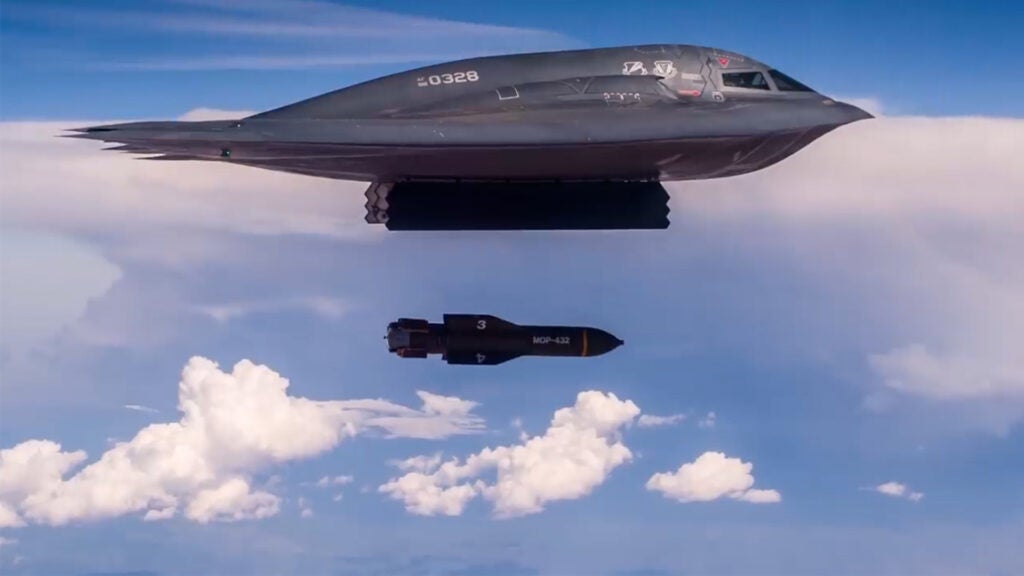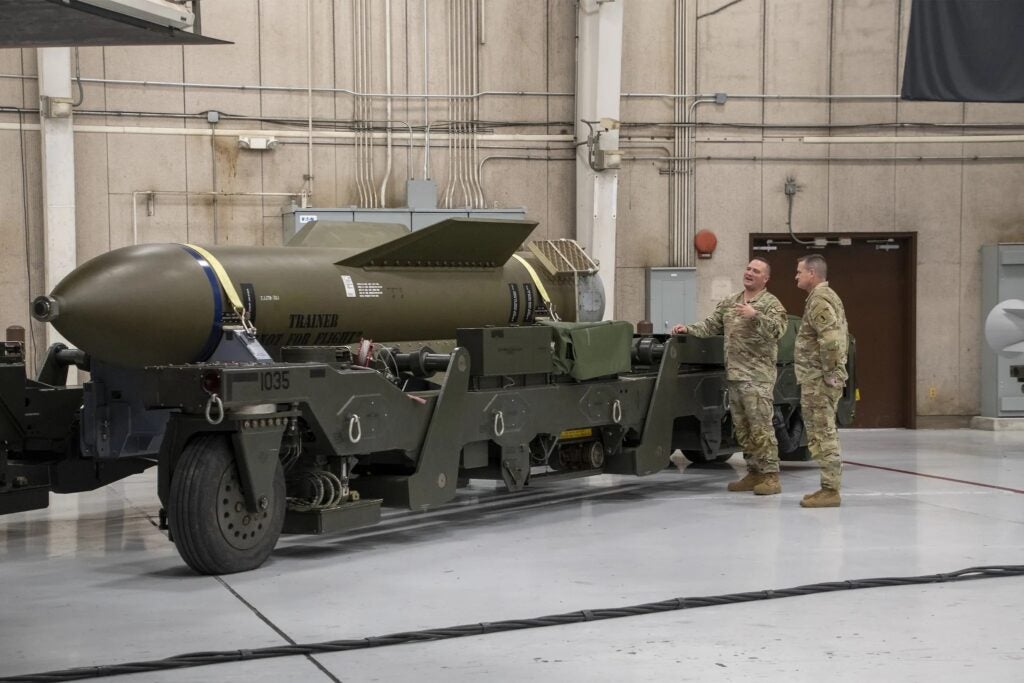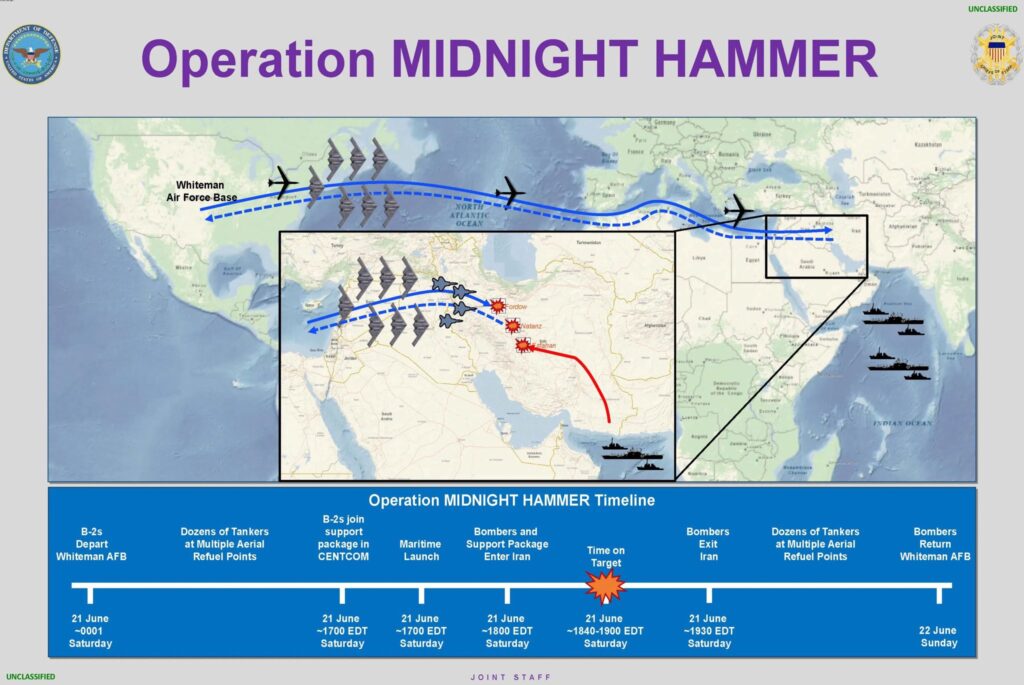Operation Midnight Hammer: America bombs Iran
Between 2:10AM and 2:35AM Iran Standard Time a force of seven B-2A Spirit strategic bombers dropped a staggering 420,000 lbs. of ordnance on two deeply buried uranium enrichment sites in Iran. The operation involved flying the bombers all the way from Missouri to Iran, a round trip of approximately 40 hours with multiple in-flight refuelings. Two other bombers flew west towards Guam then Diego Garcia in a highly followed OSINT event which turned out to be a ruse to draw attention away from the eastward flying bombers.
The seven bombers dropped 14 GBU-57 Massive Ordnance Penetrators (MOPs) each weighing nearly 30,000 lbs. (13,600kg) including 5,342 lbs. of high explosive (~2,500kg). This weapon is the most capable earth penetrating weapon ever built with the extremely dense hardened bomb casing able to penetrate well over 60 meters of earth. The US Department of Defense reports that 12 of these weapons were dropped on the Fordow uranium enrichment facility that is located inside of a mountain. The other two MOPs were dropped on the Natanz enrichment facility. While the seven bombers made up the primary striking force 118 other aircraft participated in support roles such as refueling, reconnaissance, and suppressing Iranian air defenses. 75 munitions in total were used including 30 Tomahawk cruise missiles fired at the third target, the enrichment site at Isfahan.

These strikes come barely over a week after the Israeli Air Force began its own campaign on June 13 to destroy the Iranian nuclear program along with its medium range ballistic missile fleet. While highly succesful relative to the size and limited assets of the IAF it ran into barriers regarding the fortifications at Fordow. The Israelis claimed that they had a method of disabling the site without US support, however, little detail about this was revealed.
Despite the shocking and unprecedented nature of the American strikes the emphasis is still put on diplomacy. After the bombers departed, the Israelis continued to conduct strikes across Iran on Sunday, however, the US Air Force was not involved. This is because the American operation was intended to be limited strictly to attacks on nuclear enrichment facilities rather than the regime, in an effort to avoid escalation. According to Axios this intention was directly communicated to the Iranian Foreign Minister Abbas Araghchi by Trump’s special envoy Steve Witkoff while the strikes were underway. So far no exchanges of fire between Iranian and American forces have taken place since Midnight Hammer concluded. The Pentagon also confirmed that US aircraft were not engaged by Iranian air or SAM assets during the operation.

How this unique method of diplomacy will play out remains to be seen. Iran has made threats about closing the Straits of Hormuz, however, doing so would antagonize the Saudis, Qataris, and Emiratis who have taken the position of criticizing Israel’s air campaign. Similarly, closing the Straits would alienate the Chinese and Europeans who depend on oil imports from the region. With US forces holding back the Iranians would be making an incredibly risky choice by directly attacking U.S. assets or closing the strait. However, according to the Tehran Times the Iranian Foreign Minister Abbas Araghchi stated “the door to diplomacy is definitely closed.” Araghchi arrived in Moscow on June 22, not even 24 hours after the strike and will meet with Putin on June 23.

